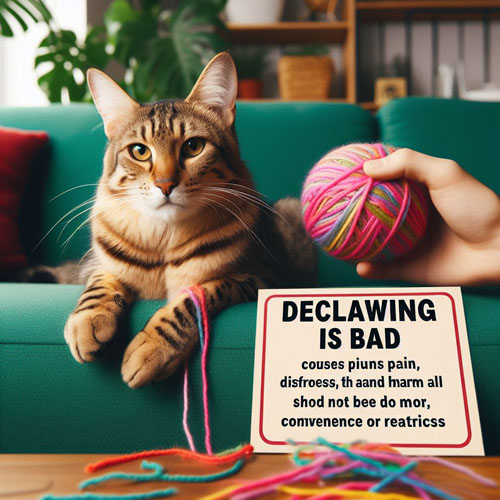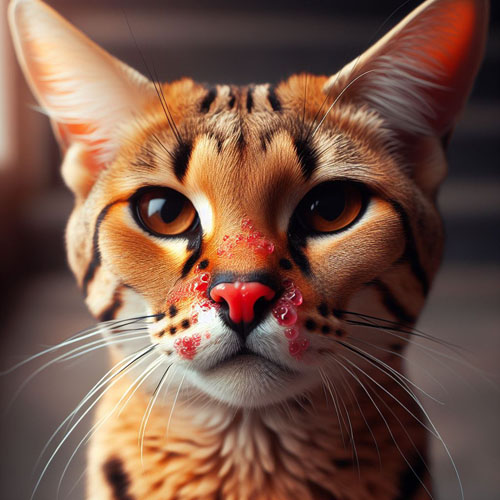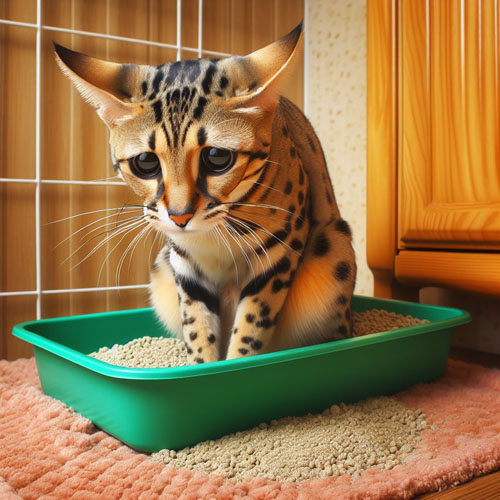The Role of Genetics and How Breeders Can Help Avoid FIP in their Catteries
- Written By Debra Roberts, Owner and Editor-In-Chief of SAVANNAHGANS® Magazine — www.savannahgans.com
What should breeders know about genetics and how to proceed with breeding once a kitten from their cattery has been diagnosed with FIP?
Information obtained from Dr. Niels C. Pedersen, DVM, Ph.D., School of Veterinary Medicine, UC Davis. Susceptibility/resistance to FIP is polygenic, which involves specific genetic differences (traits) among the many genes involved
in immunity. Each genetic difference contributes to a positive or negative risk. If a cat inherits a lot of positive risk factors, it’ll be
more susceptible to FIP. If the kitten inherits a lot of adverse risk factors, it will be less susceptible.
However, it’s important to understand that genetic risk factors account for about 50% of FIP resistance/susceptibility. We can determine the remainder of the disease risk by several environmental factors affecting the immune system. Potentiators for FIP
include:
- loss of maternal systemic immunity by separation at birth
- early weaning/loss of lactogenic immunity
- malnutrition
- other common infectious diseases
- overcrowding
- early spay/neuter, routine vaccinations
- re-homing
- FeLV, FIV
- pregnancy
- old-age, young kittens
- complex genetic predispositions
- congenital heart disease
Therefore, if environmental risk factors come and go, the risk for FIP will also fluctuate over time, adding to the confusion of how much genetics play a role in FIP incidence.
Inbreeding is the fastest way to accumulate too many adverse genetic risk factors. Inbreeding causes more and more genes (traits) from each parent to be identical, i.e., homozygous. Suppose, by circumstances, individual cats in a breed or bloodline are
inbred for too many adverse risk factors. In that case, they will pass those on to their offspring, primarily when bred to closely loss of maternal systemic immunity by separation at birth early weaning/loss of lactogenic immunity malnutrition other common infectious diseases overcrowding early spay/neuter, routine vaccinations re-homing FeLV, FIV
pregnancy old-age, young kittens complex genetic predispositions congenital heart disease related cats that carry the same risk factors in a homozygous state. Therefore, if you have a tom highly inbred for many adverse risk factors, it’s more likely to pass on FIP susceptibility if bred to related queens carrying the same risk factors. Therefore, it’s common for breeders to see more FIP cases in kittens from specific mating’s. The best way to prevent kittens from inheriting too many of the same risk factors is to find a mate (usually a tom) that hopefully doesn’t carry this same set of risk factors.
Research suggests concentrating on toms, not because queens don’t carry the same risk factors, but because toms can produce many more kittens and have a more significant genetic influence. If you’re a purist, you’d not want to keep either toms or queens
that produce FIP kittens–but that is too much for most pure breeders to do. The big problem is that we don’t know which genetic traits carry a risk for FIP, and there’s no test for them. Therefore, we must rely on the history of FIP in offspring
With the advent of treatment, it’s much easier to identify cats presumably at the highest genetic risk for FIP and neuter them after being cured. It’s admittedly crude and like hitting a gnat with a sledgehammer, but it’s the only way to alter the influence of genetics on FIP incidence in pedigreed cats





